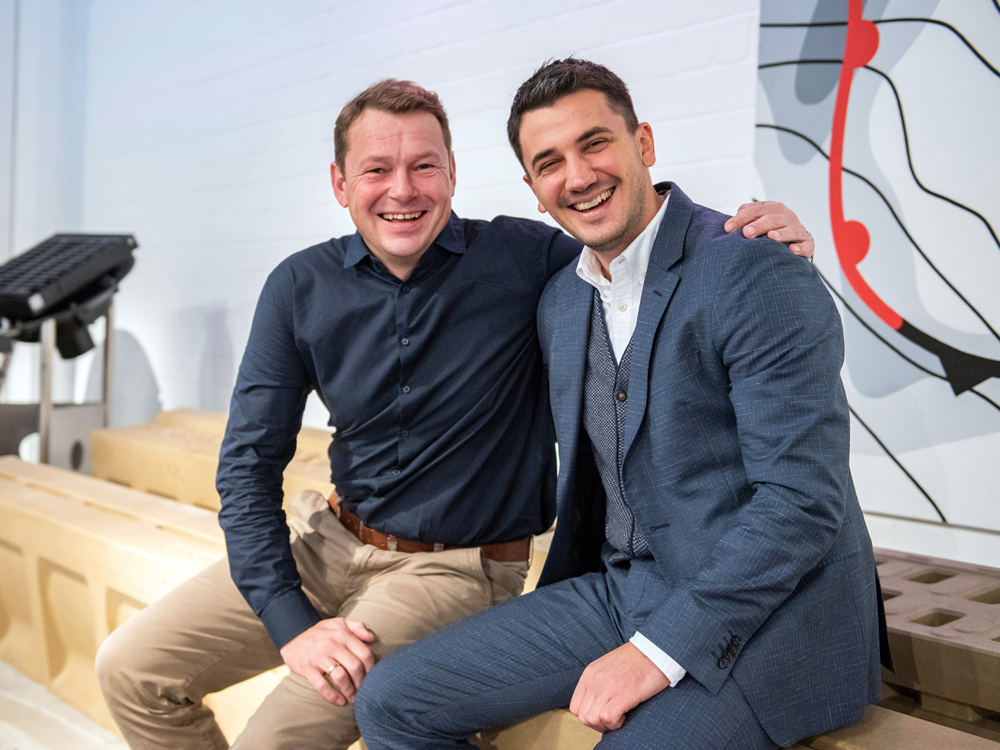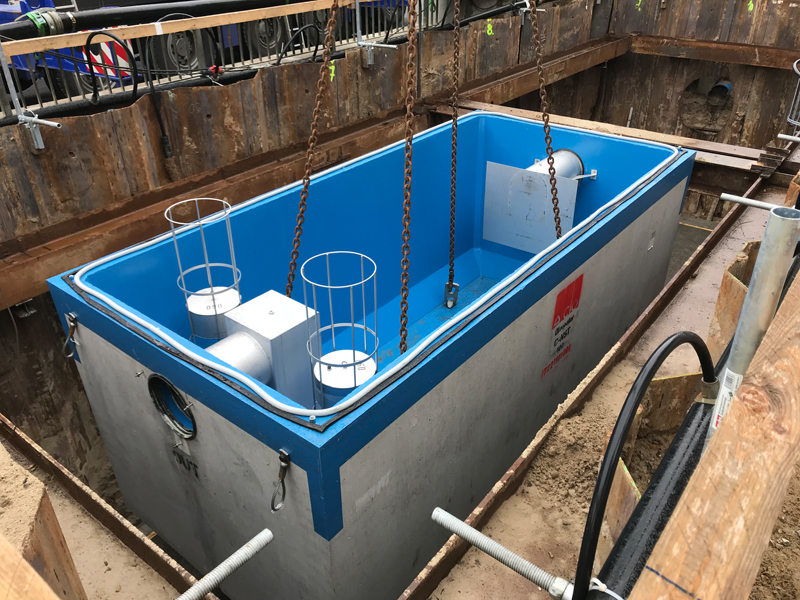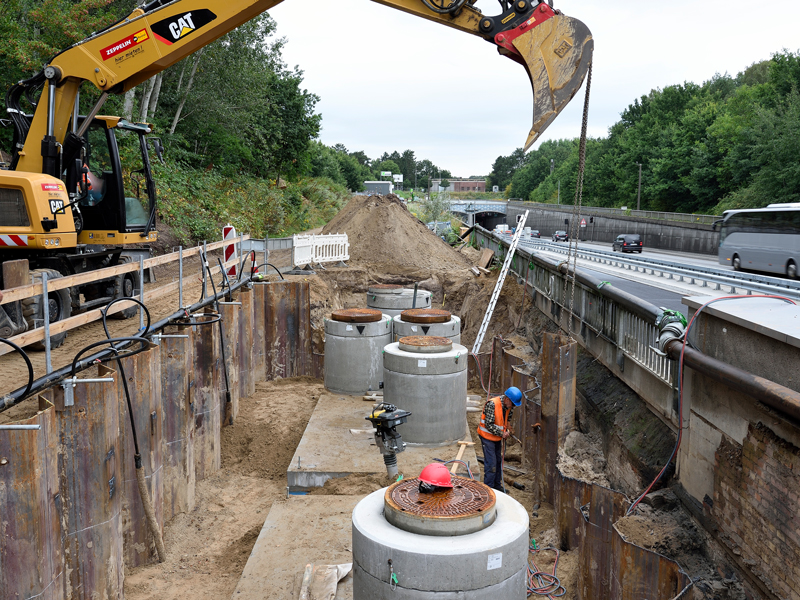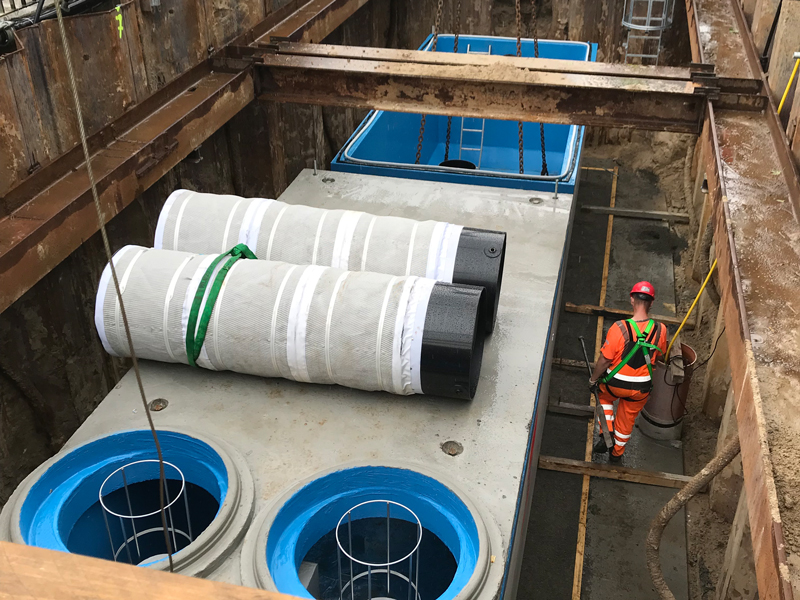Disaster control in the Rendsburg Kiel canal tunnel
Up to 50,000 vehicles a day drive through the Rendsburg Kiel Canal tunnel. What happens if an accident takes place? If a road tanker loses its highly inflammable and toxic load? To ensure that even such a scenario does not end up in a disaster, various regulations and rules have to be complied with during the remediation of the tunnel − particularly with respect to the drainage. This is where ACO Water Management supplied a complete solution from the ACO system chain. The water is safely collected in a closed system, cleaned, retained and subsequently released. For the project manager, the planners and the construction companies, this has the major benefit of only having to deal with one contact for the whole of the drainage system.
In the road tunnel under the canal in Rendsburg, water is collected in two zones: the access roads and the tunnel itself. On the access roads, this is mainly in the form of rainwater which is collected in the road drains, lateral channels as well as one channel in each case which goes from one side of the road to the other. In the tunnel itself, lateral drainage channels reliably drain away not only the water carried into the tunnel by the vehicles, but also fuel which might leak out in the case of an accident, which is then collected in a special separation plant to treat it in accordance with environmental guidelines. The channels in the tunnel are a special version of the ACO DRAIN® KerbDrain KD 140. These drains were developed specially by our engineers in a sealed construction for the particular conditions in this tunnel.
After being collected via the channels, the water enters a triple separation system consisting of a sludge trap, a lightoil separator in the form of the ACO Oleopator-PR-NS 100, and a sampling duct. Hazardous liquids such as oil, petrol and lubricants are separated out here from the wastewater. The capacity of up to 100 litres of liquid per second corresponds to 133 wine bottles being emptied at the same time.
ACO pump stations then pump the treated water into the Kiel Canal, and thus back into the natural water cycle.



